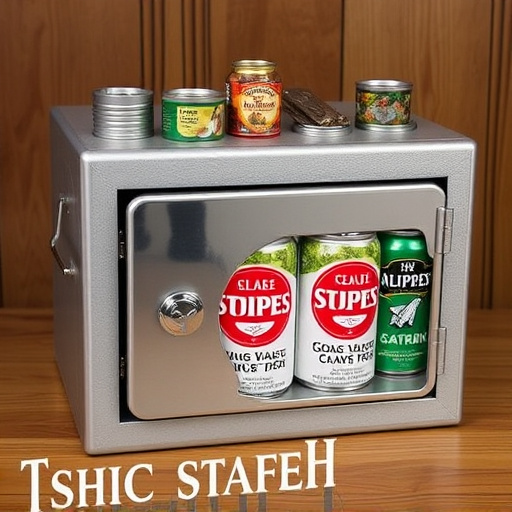In today's world, everyday items like fake cleaning products can hide secret compartments offering creative storage solutions while maintaining an aesthetically pleasing environment. These hidden spaces securely store valuable items like keys or cash, combining functionality with design. However, the trend raises ethical concerns, notably the potential for facilitating illicit activities and deceptive practices, particularly in products like fake cleaning supplies, that could undermine consumer trust.
“Uncover a world hidden just beneath your fingertips with our exploration of everyday items concealing secret compartments. From seemingly innocuous cleaning products to other common household artifacts, we delve into the surprising places where crafty designers have incorporated hidden spaces. This article navigates the fascinating realm of concealed storage, shedding light on both the creative and ethical considerations surrounding these ‘fake’ cleaning product secret compartments. Prepare to see your everyday objects in a whole new, intriguing light.”
- Uncovering the Hidden Spaces: Where Secret Compartments Exist
- Common Household Items with Surprising Storage Capabilities
- Ethical Considerations and Dangers of Concealed Compartments in Everyday Objects
Uncovering the Hidden Spaces: Where Secret Compartments Exist
In today’s world, where creativity knows no bounds, even everyday household items can hide secret spaces and unexpected compartments. Uncover the hidden tapestry behind seemingly ordinary objects, like that fake cleaning product on your shelf. Beneath its unassuming exterior, it could be a cleverly designed storage solution for keeping valuables safe and secure. These concealed compartments offer a unique twist to an otherwise mundane task—storing items discreetly while maintaining an aesthetically pleasing environment.
Whether it’s a vintage piece of furniture or a modern kitchen gadget, the art of hiding secrets is not just limited to spy novels. From cleverly crafted drawers in antique tables to hidden slots within everyday tools, these secret compartments provide a game-changing solution for those seeking secure storage. Imagine discovering a stash of memories tucked away in your grandparent’s old clock or a safe space for precious items inside a seemingly ordinary book—a true testament to the innovative mind!
Common Household Items with Surprising Storage Capabilities
Many common household items serve double duty as clever storage solutions, often hiding secret compartments where you’d least expect them. Consider your everyday cleaning supplies, for instance. Fake cleaning product bottles can be ingeniously crafted with hidden spaces, allowing you to stow away smaller items like keys, cash, or even a portable charger discreetly. These creative designs offer an added layer of security, turning a mundane item into a safe haven for essential belongings.
From bookshelves and kitchen cabinets to bathroom drawers and garden tools, the possibilities are vast. Some inventive manufacturers have even incorporated magnetic strips or secret compartments within seemingly ordinary furniture, enabling you to keep valuables out of sight but easily accessible. This trend towards integrating storage into everyday objects is a testament to our ever-evolving need for efficient organization while maintaining a sleek and uncluttered aesthetic.
Ethical Considerations and Dangers of Concealed Compartments in Everyday Objects
While the idea of a hidden compartment in everyday objects can seem intriguing, there are significant ethical considerations and potential dangers to keep in mind. The integration of secret compartments, especially in items like fake cleaning products, raises concerns about privacy and security. Concealing spaces within common household goods could facilitate the clandestine transport of illicit items or sensitive materials, compromising public safety and legal integrity.
Furthermore, consumers have a right to know what they are purchasing and using in their homes. A hidden compartment might mislead users into believing they are buying a genuine cleaning product when, in fact, it contains unknown substances or is designed for purposes other than its advertised function. This deceptive practice could lead to unforeseen health risks and erode trust in manufacturers and retailers.
In exploring the hidden compartments within common household items, we’ve uncovered a fascinating world of concealed storage. From seemingly innocuous cleaning products to everyday objects, these secret spaces offer both creative solutions and potential risks. While the idea of a fake cleaning product with a hidden compartment may seem harmless, it raises ethical considerations about privacy, security, and even the potential for illegal activities. As we navigate this modern phenomenon, it’s crucial to be aware of the dangers and implications, ensuring that innovation serves humanity responsibly.
